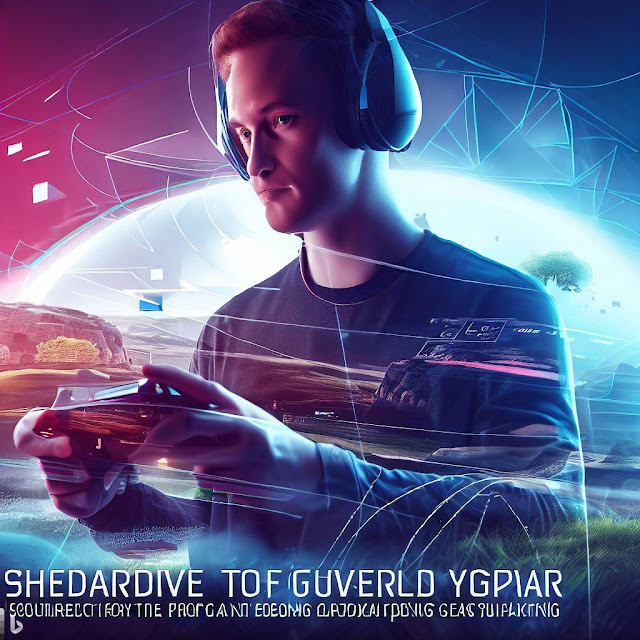Search This Blog
Talk related Game design, Development, Importance of every element in game.
Featured
- Get link
- X
- Other Apps
The Great Divide: A Comparative Analysis of Mobile Games and PC-Platform Games, and the Impact of UI/UX
The Great Divide: A Comparative Analysis of Mobile Games and PC-Platform Games, and the Impact of UI/UX
Introduction
Mobile games and PC-platform games are two unique areas where the gaming industry has grown. Both systems provide distinctive gaming experiences and accommodate a range of player preferences. In this article, we'll examine how mobile games and games on the PC compare in terms of gameplay, hardware, visuals, multiplayer, and monetization. We'll also look at how UI/UX design has impacted these platforms, improved player experiences, and influenced the direction of gaming.
1.
Gameplay Experience:
Mobile Games: Mobile games excel at providing quick,
accessible, and on-the-go gaming experiences. Casual games like "Candy
Crush Saga" and "Subway Surfers" captivate players with
straightforward mechanics and short sessions, perfect for filling idle moments.
PC-Platform Games: PC-platform games boast complexity and
depth in gameplay. Titles like "The Witcher 3: Wild Hunt" and
"Assassin's Creed Valhalla" offer expansive open-world exploration,
intricate narratives, and intricate combat systems, providing immersive and
lengthy gaming sessions.
2.
Hardware Requirements:
Mobile Games: Mobile games are optimized for smartphones and
tablets, accommodating limited processing power and touch-based controls. They
utilize gyroscopic sensors for unique interactions, providing diverse gaming
experiences across various devices.
PC-Platform Games: PC-platform games leverage the hardware
prowess of dedicated gaming machines, offering high-resolution graphics,
detailed textures, and advanced physics. Keyboard and mouse or gamepad controls
provide precision and depth for various gaming genres.
3.
Graphics and Visual Fidelity:
Mobile Games: Mobile games have come a long way in visual
fidelity, yet they may not match the sheer graphical prowess of PC-platform
games. Games like "Monument Valley" showcase stunning artistic
designs and creative visuals.
PC-Platform Games: PC-platform games deliver breathtaking
visuals with cutting-edge technology. Titles like "Cyberpunk 2077"
and "Red Dead Redemption 2" set new standards in graphics, immersing
players in realistic and awe-inspiring worlds.
4.
Game Depth and Complexity:
Mobile Games: Mobile games emphasize accessibility and
simplicity. While some mobile games offer depth, they are generally designed
for pick-up-and-play experiences, suitable for casual gamers.
PC-Platform Games: PC-platform games excel in offering
complex and layered gameplay. Games like "Civilization VI" and
"Divinity: Original Sin 2" challenge players with intricate strategy,
deep storytelling, and expansive worlds.
5.
Multiplayer and Social Features:
Mobile Games: Mobile games often incorporate social and
multiplayer elements, with features like leaderboards, friend challenges, and
clan systems. "Clash Royale" thrives on real-time competitive
multiplayer battles.
PC-Platform Games: PC-platform games offer diverse
multiplayer options, ranging from competitive PvP (Player vs. Player) to
cooperative PvE (Player vs. Environment) experiences. "Overwatch"
revolutionized team-based multiplayer combat.
Impact of UI/UX Design on Mobile Games and PC-Platform
Games:
6.
Mobile Games:
UI/UX design optimizes mobile games for touch-based
controls, ensuring smooth and intuitive gameplay on smaller screens.
"Among Us" (InnerSloth) stands as a prime example
of good UI/UX design, with its clean interface and intuitive tasks.
"Flappy Bird" (Dong Nguyen) showcased addictive
gameplay but suffered from minimal instructions, leading to some confusion.
PC-Platform Games:
UI/UX design in PC-platform games enhances the desktop
gaming experience, enabling seamless navigation and comprehensive customization
options.
"The Witcher 3: Wild Hunt" (CD Projekt Red) is
acclaimed for its immersive UI, presenting essential information without
cluttering the screen.
"Anthem" (BioWare) faced criticism for its
cumbersome UI and awkward menu navigation, hindering player engagement.
Conclusion:
Mobile games and PC-platform games offer distinct
experiences, catering to various player preferences. Mobile games provide
accessible and casual experiences, perfect for gaming on-the-go, while
PC-platform games offer in-depth immersion and high-fidelity visuals. UI/UX
design plays a crucial role in both platforms, optimizing gameplay interactions
and enhancing player engagement. As technology advances, we can expect further
advancements in UI/UX design, shaping the future of gaming experiences on both
mobile and PC platforms.
References:
1.
Chittaro, L., & Ranon, R. (2017).
Interaction design and gamification in health: Fitness and persuasion as
motivating factors to use exergames. Entertainment Computing, 20, 63-73.
2.
Drachen, A., Sifa, R., Bauckhage, C., &
Thurau, C. (2012). Guns, swords, and data: Clustering of player behavior in
computer games in the wild. In Proceedings of the international conference on
entertainment computing (pp. 286-294).
3.
Plass-Oude Bos, D., Reuderink, B., & Heylen,
D. (2011). The role of gaming in measured EEG brain-computer interface
performance. Interacting with Computers, 23(5), 506-512.
4.
Hamilton, W. (2019). User interface design for
video games: The interplay of text, images, and gameplay. Routledge.
- Get link
- X
- Other Apps
Popular Posts
The Crucial Role Played by UI/UX Designers in the Gaming Industry
- Get link
- X
- Other Apps
Mass Effect: Andromeda - Unraveling the Missteps and UI/UX Misadventures
- Get link
- X
- Other Apps
Navigating Game Development Challenges: A Comparative Analysis of UI/UX for Different Platforms
- Get link
- X
- Other Apps
Shaping Tomorrow's Gaming Landscape: The Future of Game Development, Design, and the Evolving Role of UI/UX
- Get link
- X
- Other Apps





Comments
Post a Comment